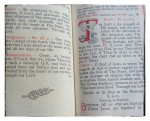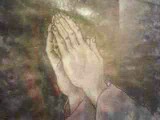
MANY REMARKABLE CURES TAKE PLACE AT THE SHRINE OF OUR LADY OF KNOCK, COUNTY MAYO, IRELAND
The Church has not yet pronounced upon the apparition at Knock. The facts… are from purely human testimony. The testimony seems most convincing. The fact that the Knock devotion is still growing after a century is a fair indication that it is not based on a delusion. So is the fact that many remarkable cures have taken place at the shrine and are still taking place.
THE TESTIMONY IS TRUSTWORTHY AND SATISFACTORY
Within seven weeks of the apparition, the Archbishop of Tuam, the Most Reverend John MacHale, appointed a commission of three priests to investigate. They questioned the witnesses separately and found that their stories agreed in practically all details. The witnesses ranged in age from six-year-old John Curry to seventy-five-year-old Bridget Trench, the lady who had tried to kiss the feet of the Virgin. All were known to be of good character and not the kind who would manufacture such a story. The commission reported that “the testimony of all, taken as a whole, was trustworthy and satisfactory.”
ANOTHER COMMISSION WAS APPOINTED TO INVESTIGATE
Despite this favourable report, the Archbishop decided to wait. In 1936, Archbishop Gilmartin appointed another commission. Evidence was taken from the two surviving witnesses as well as from persons claiming to have been cured at the shrine. A full statement was forwarded to Rome, but as yet there has been no formal sanction of the shrine.
A FORMAL STATEMENT
One of the witnesses who lived long enough to testify before both commissions was Mrs. O’Connell, the former Mary Beirne. She was always ready to talk to any visitors and was interviewed numerous times through the years. She talked to newspaper correspondents, archbishops, bishops, and ordinary pilgrims. All were impressed by her candour and her sincerity. In 1936, in a sworn statement, she confirmed her story of 1879. She was grievously ill at the time. After her statement was read to her, she made this addition: “I make this statement on my deathbed, knowing I am about to go before God.” She died six weeks later, on October 19, 1936.
EVERY POSSIBLE NATURAL EXPLANATION HAS BEEN INVESTIGATED
Every possible natural explanation of the figures has been investigated. It was thought that perhaps someone had projected them with a magic lantern. A commission tried this out but could find no possible way of projecting the images into the air. It will be remembered that they stood out a short distance from the gable.
Newspaper correspondents from England also tried out the magic-lantern idea. They were fair enough to admit that “in the situation a magic lantern was not possible.”
It was suggested that the figures might have been the work of an artist who used phosphorescent paint. When the vision was first seen, however, it was still daylight, and phosphorus would not have been visible.
A story that gained wide circulation was that one of the witnesses was addicted to drink. This was proved to be false. It would not have explained anything anyway. There were fifteen witnesses to the apparition, and no one has suggested that all fifteen were under the influence of alcohol.
… There were thousands of cures at Knock, but they were not scientifically investigated until 1936, when the Medical Bureau was established.
– From: “The Woman Shall Conquer” by Don Sharkey, Prow Books/Franciscan Marytown Press, Libertyville, IL, 1954
